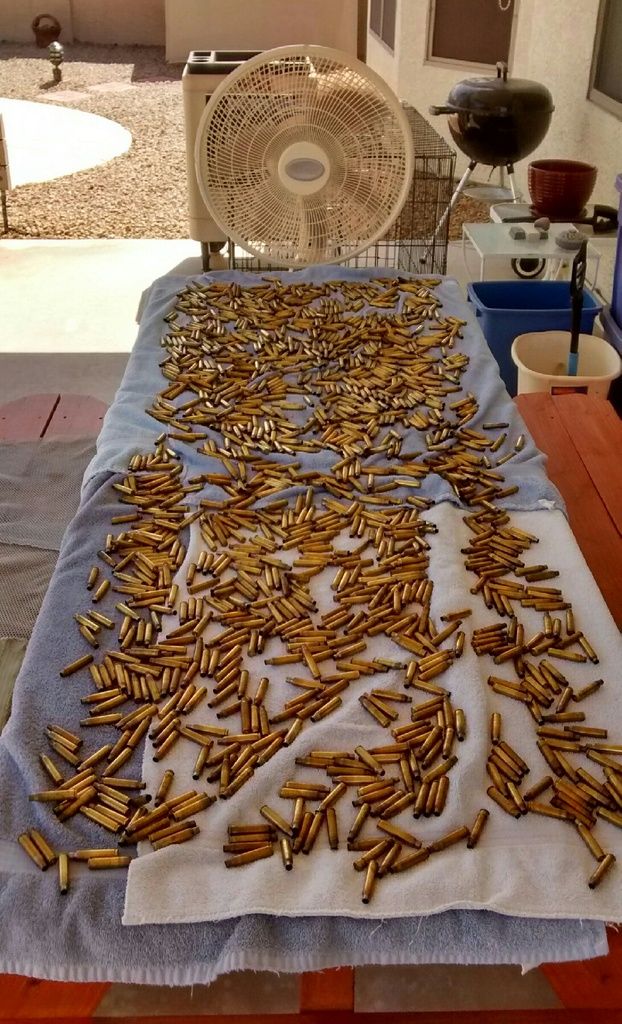This is a bunch of range pickup brass I collected on my last visit to my club range. It was all once fired laying everywhere. There was more, but my back was getting sore from bending over to pick it up. The stuff was dusty inside and out. So I put it in a few of those zippered mesh bags. (The kind women wash their bras and panties in). Then I soaked it in a couple of 5 gallon pails of hot water for about an hour.
After that I rinsed them with the hose, then spread them out as you see here with a fan on them. It will hit about 105F this afternoon. So by tomorrow morning they be dry inside and out. Then I'll full length resize and deprime them. After that they'll get run through my Giraud Powered Case Trimmer. Lastly I'll give them a good polishing, then through the Dillon they'll go.
I try to keep my range visits to Monday mornings early. There is usually a ton of .223 and 9 MM laying around from all of the weekend shooters free for the picking. So many of these guys don't reload, and just leave perfectly good once fired brass just sitting there. It sticks out like a sore thumb it's so shiny. Sometimes I'll find other calibers as well. It just depends on what they leave. Last year I found about 250 rounds of once fired 8 MM Mauser. It was all Prvi Partizan brass. Good stuff. I haven't bought any brass since I retired. And I sure am not going to spend $7.00 a box on .223 when I can reload this stuff for pennies.

After that I rinsed them with the hose, then spread them out as you see here with a fan on them. It will hit about 105F this afternoon. So by tomorrow morning they be dry inside and out. Then I'll full length resize and deprime them. After that they'll get run through my Giraud Powered Case Trimmer. Lastly I'll give them a good polishing, then through the Dillon they'll go.
I try to keep my range visits to Monday mornings early. There is usually a ton of .223 and 9 MM laying around from all of the weekend shooters free for the picking. So many of these guys don't reload, and just leave perfectly good once fired brass just sitting there. It sticks out like a sore thumb it's so shiny. Sometimes I'll find other calibers as well. It just depends on what they leave. Last year I found about 250 rounds of once fired 8 MM Mauser. It was all Prvi Partizan brass. Good stuff. I haven't bought any brass since I retired. And I sure am not going to spend $7.00 a box on .223 when I can reload this stuff for pennies.


